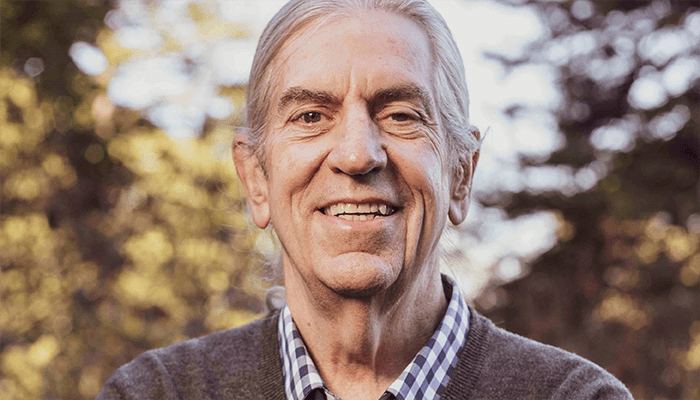
Just as today’s science is tomorrow’s world, so too today’s vision research is tomorrow’s ophthalmology practice. Here, we push ARVO member Gary D. Novack into the limelight, exploring his career success, sharing his advice, and uncovering an approach to research that would make Captain James T. Kirk proud.
What is your job title?
I am the President of PharmaLogic Development, and I am also a clinical professor in the Department of Ophthalmology & Vision Science at the University of California, Davis, USA.
What do you actually do?
My PharmaLogic job has me helping companies develop novel treatments for eye disease through pharmaceutics, non-clinical, clinical, and regulatory development. In my academic life, I teach residents and fellows about research and critical thinking.
What is your relationship with ARVO?
I’ve been a member since 1983. In that time, I’ve presented at numerous meetings, been a chair of the Commercial Relationships Committee – in which we prepared ARVO’s first statement of Financial Disclosure (1) – and been part of the Benchtop to Bedside program as committee member, moderator, and judge.
What’s your elevator pitch?
I help companies develop novel treatments for eye disease.
Is there any analogy you could use to describe the concept of your research?
Like Captain James T. Kirk in the Star Trek Original Series “Corbomite Maneuver” episode, I use available information to take strategic directions and optimize resources.
What is the best and worst part of your job?
The best part is when we get FDA approval for a product or have a manuscript accepted. The worst part is when you are advising a company on how to optimize their regulatory interaction, and then you see them compromise quality for expediency.
Your first and your latest project?
My first was evaluating the potential for a then new drug, fentanyl, to accumulate after repeated injection. My latest was helping a small pharmaceutical company repurpose a drug for ophthalmic use.
Is there an upcoming project that you are excited about?
There are dozens of novel ophthalmic therapeutics “sitting on my desk” right now!
What is the biggest success or proudest moment of your career?
I can only narrow it down to three. One is seeing my “students” succeed. Then, it’s having 60 products approved and 350 papers published. Finally, serving as a Regent of the University of California, USA.
What was your first ARVO work?
In 1984, we had four presentations at ARVO in Sarasota on a new glaucoma therapy, levobunolol (2). For perspective, there were only approximately 1,500 presentations at an ARVO meeting in those days – it was highly selective and competitive. We later published the work, and the drug was subsequently approved in Germany, Canada, the US and worldwide.
In 1987, I presented work on the effect of drop size on systemic effects of a topical ß-blocker (3). It was notable for showing that, within a given range, drop size had no influence on safety or efficacy – but also one in which I used asynchronous dual slide projection – a true anachronism today.
What influence has ARVO had in your career?
It has had a profound influence. Since its founding nearly a century ago, it has been the organization of quality ophthalmic science and collegial interactions that have been key to improving the quality of my research, and to the development of products.
What has been your biggest challenge or obstacle?
It’s difficult to communicate my experience and perspective to others – and this is especially the case when communicating to those new to ophthalmology or to product development.
Can you name an important research paper that you read early in your career?
That would be “Pharmacokinetics of topically applied ophthalmic drugs” (4). John Shell expertly conveyed the basics of ophthalmic drug delivery, including the distinction between pulsatile and continuous delivery.
What advice do you have for those following in your footsteps? Or what advice would you give to your younger self?
Don’t burn bridges.
Who inspired you early in your career – and who inspires you today?
Early in my career, Victor Pereira, Larry Stark, Wally Winters, James McGaugh, and John Urquhart inspired me. Now, it is bright young minds.
If you weren’t an ophthalmologist, what would you be doing?
I would be teaching leadership or exegesis.
What is something that most people would be surprised to learn about you?
I previously had a job where I wore a hardhat and steel-toed work shoes, and drove a forklift.
Do you have a favorite hobby or pastime?
I like cycling, as well as hiking with my grandchildren.
Anything to add?
I credit my parents, who were first generation to college, for providing me the education (together with the University of California) to enable me to reach my adolescent goal of being a scientist. I also credit my family for giving me support and fulfillment throughout my life.
References
- GD Novack, “ARVO Commercial relationships policy: financial disclosure in ARVO presentations and publications. Association for Research in Vision and Ophthalmology, Inc.,” Invest Ophthalmol Vis Sci, 40, 2765 (1999). PMID: 10549632.
- RE Bensinger et al., “Levobunolol: A three-month efficacy study in the treatment of glaucoma and ocular hypertension,” Arch Ophthalmol, 25, 306 (1985). PMID: 3883971.
- GD Novack et al., “Does reducing drop size decrease systemic effects of a topical ß-blocker?” Supp to Invest Ophthal Vis Sci, 28, 12 (1987).
- Shell JW, “Pharmacokinetics of topically applied ophthalmic drugs,” Survey Ophthalmol, 26, 207 (1982). PMID: 7041308.
